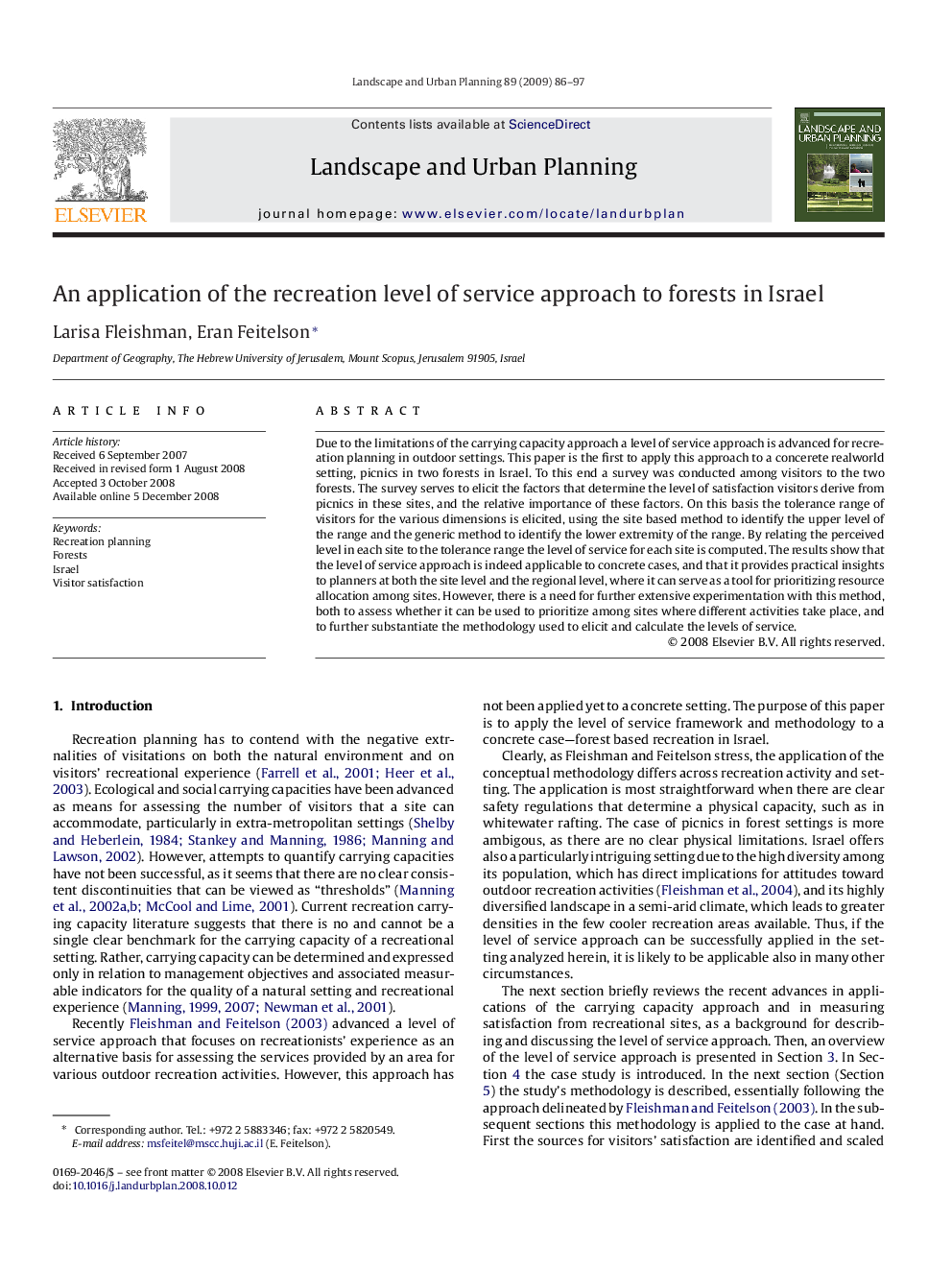| Article ID | Journal | Published Year | Pages | File Type |
|---|---|---|---|---|
| 1049902 | Landscape and Urban Planning | 2009 | 12 Pages |
Due to the limitations of the carrying capacity approach a level of service approach is advanced for recreation planning in outdoor settings. This paper is the first to apply this approach to a concerete realworld setting, picnics in two forests in Israel. To this end a survey was conducted among visitors to the two forests. The survey serves to elicit the factors that determine the level of satisfaction visitors derive from picnics in these sites, and the relative importance of these factors. On this basis the tolerance range of visitors for the various dimensions is elicited, using the site based method to identify the upper level of the range and the generic method to identify the lower extremity of the range. By relating the perceived level in each site to the tolerance range the level of service for each site is computed. The results show that the level of service approach is indeed applicable to concrete cases, and that it provides practical insights to planners at both the site level and the regional level, where it can serve as a tool for prioritizing resource allocation among sites. However, there is a need for further extensive experimentation with this method, both to assess whether it can be used to prioritize among sites where different activities take place, and to further substantiate the methodology used to elicit and calculate the levels of service.
